
The future of any tech sector can often be seen in its innovation pipeline. And what better place to see that pipeline in action than early-stage startups? This is why “demo days” for accelerator cohorts/classes are always illuminating. It’s a glimpse into the near future.
Another attribute that makes this format valuable is brevity. To prepare for the limited timeframe of investor pitches, these startups are conditioned to cover pertinent factors and metrics (problem, solution, addressable market, timing, team, etc.) without much time for fluff.
These dynamics were on display in a recent startup showcase held by AWE Academy.* Its recent fundraising class culminated in a quick-hit procession of demos from its startup participants. And we’re featuring it for this week’s XR Talks (video and takeaways below).
Lightning Round
Diving right in, what were takeaways from each company? Here are the lightning-round summaries in the same order the companies presented. For the full video, skip to the bottom. You can also follow linked timestamps for each company as indicated in each profile below.
Fire Vision AR
Fire Vision AR lets enterprises and facilities elevate their fire-preparedness. It enables this through spatially-relevant graphics that indicate fire safety status. That can involve informational overlays to expedite fire inspection and compliance, as well as emergency response.
The company’s value proposition is to save enterprises considerable monetary value through risk management, damage avoidance, and insurance. The latter happens when Fire Vision AR boosts companies’ safety compliance, thus lowering insurance premiums.
Skip right to the Fire Vision AR segment of the video.

Spree Interactive
Spree Interactive is defying gravity. As location-based entertainment has retracted due to Covid-19 (though it’s bouncing back), Spree hopes to rise to the top. Its competitive edge in doing so is its metrics — most notably high-throughput analytics for free-roam VR installations.
Spree targets retail spaces and arcade chains that are eager to get customers back in the door. It can offer high ROI given the throughput metrics mentioned above. In some cases, it reaches 2500 weekly plays per location. Its recent funding also signals a vote of confidence.
Skip right to the Spree Interactive segment of the video.
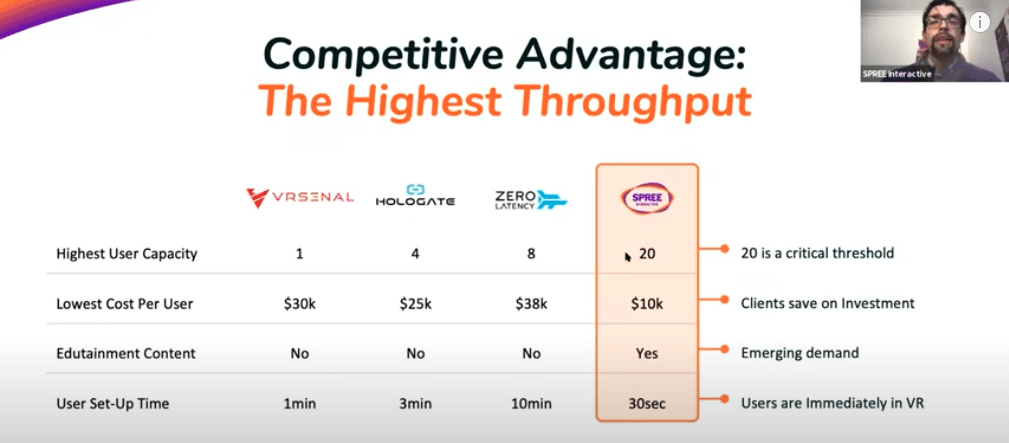
FactualVR
Factual VR builds on the AR concept of remote assistance. But instead of “see what I see” support through an AR device, factual VR’s HyperTunnel teleports experts to a location. This additional dimension makes all the difference when more interactivity and immersion are needed.
FactualVR does this by creating a digital twin of a given work site. Remote experts virtually appear in that space with front-line workers so that they can walk through a problem (sometimes literally). This engenders high degrees of immersion and interactivity where it’s needed.
Skip right to the FactualVR segment of the video.
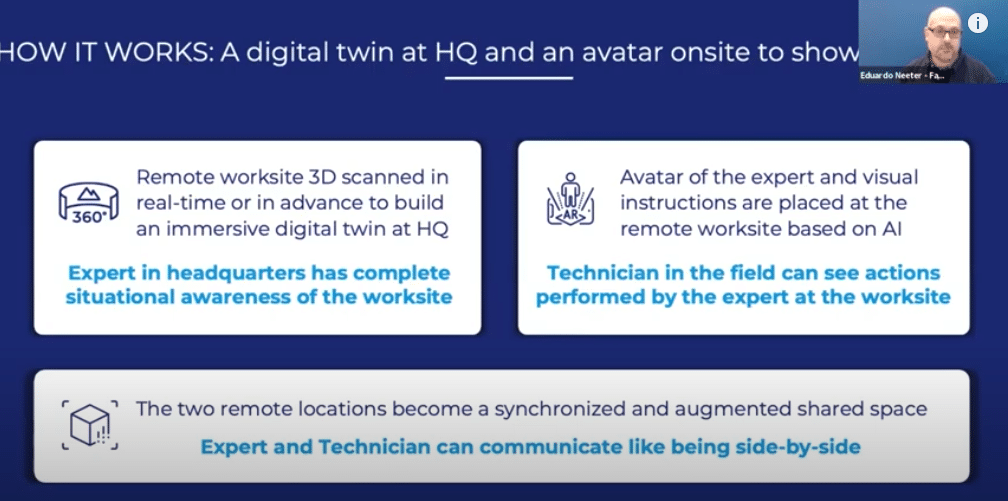
WinQuest
WinQuest is Pokémon Go meets Groupon. For users, it offers a gamified experience to discover treasures in the real world through an AR interface. Points can be redeemed for real products at the company’s brand and retail partners, thus offering value to both players and partners.
WinQuest’s business model includes in-game promotions, as well as coupon fulfillment. The latter can be attractive in that it’s low risk as businesses share margin with the user acquisition channel, versus upfront ad spend. This model also makes it cash-flow-friendly for SMBs.
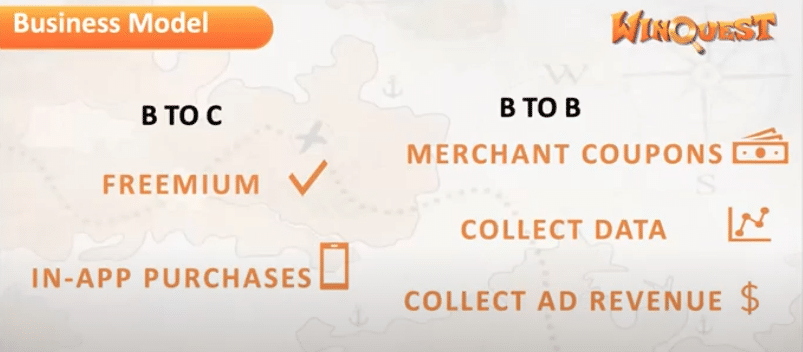
Skip right to the WinQuest segment of the video.
XR Thinking
XR Thinking streamlines AR lens prototyping. As background, creative professionals or agencies that build AR campaigns for clients often need to storyboard and prototype experiences before they do all the actual lens creation work. It’s a key part of the campaign process.
Mocking up those experiences often happens through tools like photoshop or even PowerPoint. XR Thinking is a more targeted and purpose-built approach. This makes it more effective at visualizing end-user experiences while streamlining the process for busy XR creators.
Skip right to the XR Thinking segment of the video.

BuzzAR
BuzzAR is a marketplace for instructional AR sequences. The company builds on the premise that DIY projects have exploded over the last decade, but the foremost channel for instructions is YouTube. Given AR’s more demonstrative properties for in-situ instructions, it’s a better tool.
Though this is validated in enterprise contexts, it hasn’t reached the long tail of consumer DIY needs. This is where BuzzAR comes in. Its two-sided marketplace connects experts with users and offers content creation services. It plans to scale through partner networks like eHow.
Skip right to the BuzzAR segment of the video.
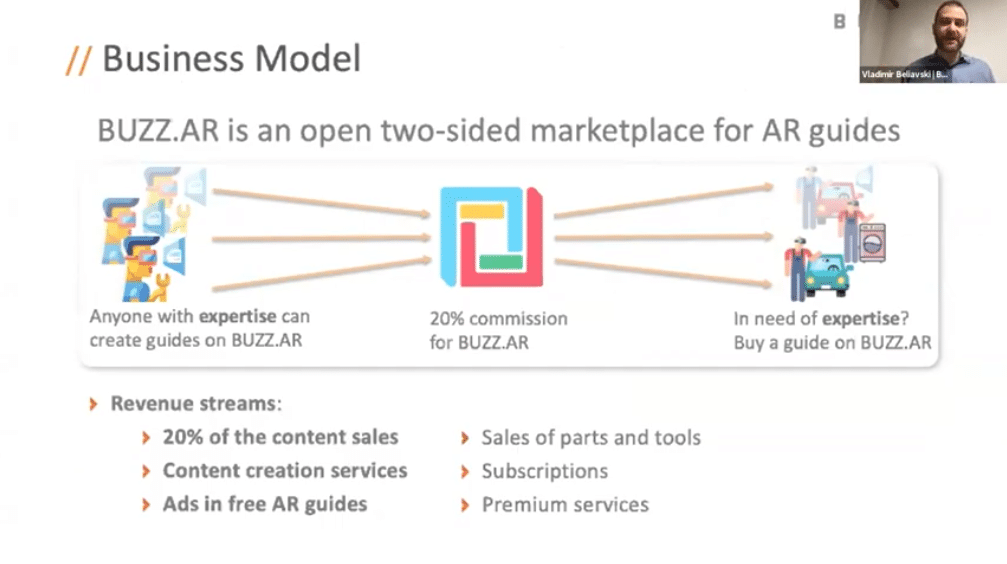
Mawari
Mawari is a 3D streaming technology for AR. This places it in one of the XR segments that we’re most bullish on: “picks & shovels” tech enablers and infrastructure players. It specifically addresses the problem of delivering graphically intensive experiences to far-flung AR devices.
This is compelled by the fact that AR devices have limited processing and energy, while AR experiences are heavy and bandwidth-hungry. Mawari comes to the rescue with a streaming SDK that renders 3D content in the cloud and delivers it efficiently to AR devices.
Skip right to the Mawari segment of the video, and see the full lot of demos embedded below.
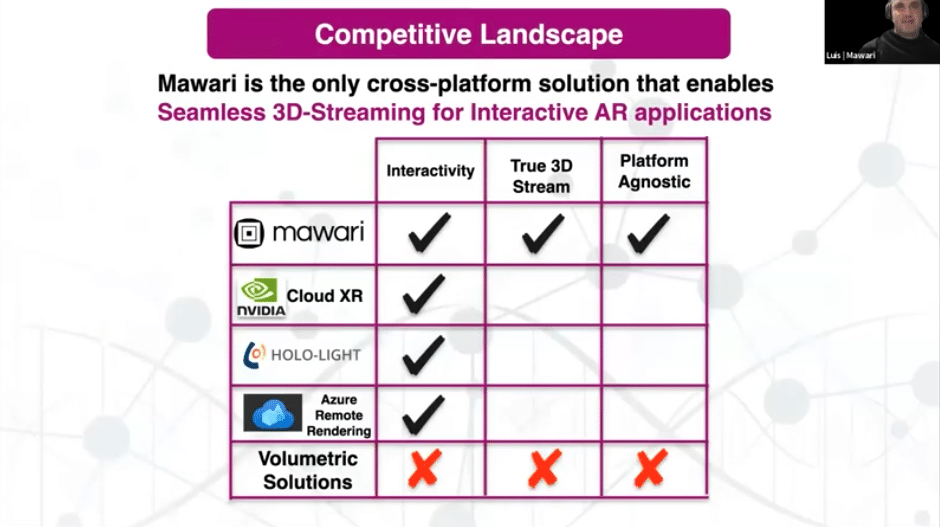
* AR Insider’s research arm, ARtillery Intelligence is an official data partner of AWE Academy. No money changes hands in this arrangement, nor is there an obligation for editorial coverage. This video was chosen based on its merits. AR Insider’s full disclosure and ethics policy can be seen here.






